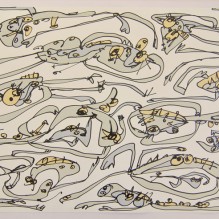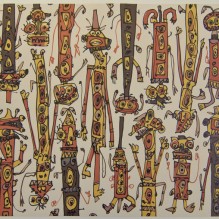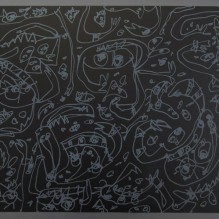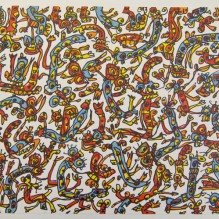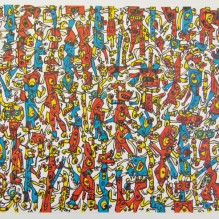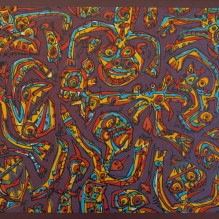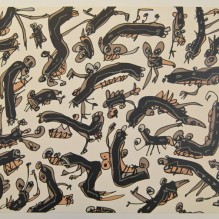Antonio Saura (September 22, 1930, Huesca -– July 22, 1998, Cuenca) was a Spanish artist and writer, one of the major post-war painters to emerge in Spain in the fifties whose work has marked several generations of artists and whose critical voice is often remembered.
Limiting his palette to blacks, greys and browns, Saura asserted a personal style that was independent of the movements and trends of his generation. His work followed in the tradition of Velasquez and Goya. Starting in 1959 he began creating a prolific body of works in print, illustrating numerous books including Cervantes’s Don Quijote, Orwell’s Nineteen Eighty-Four, Nöstlinger’s adaptation of Pinocchio, Kafka’s Tagebücher, Quevedo’s Three Visions, and many others.
In 1960 Saura began creating sculptures made of welded metal elements which represented the human figure, characters and crucifixions. In 1967 he settled permanently in Paris, and joined the opposition to the Franco dictatorship. In France he participated in numerous debates and controversies in the fields of politics, aesthetics and artistic creation. He also broadened his thematic and pictorial register. Along with his Femmefauteuil (literally “Womanarmchair”), he also worked on the series “Imaginary Portraits”,and Goya’s Dog and Imaginary Portraits of Goya begin to take shape.

